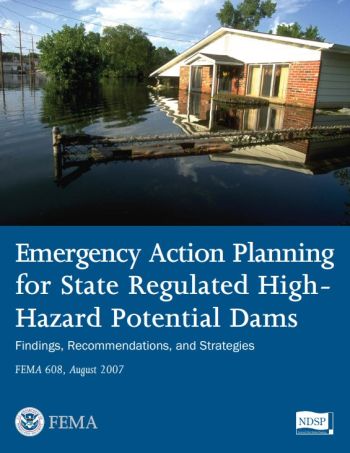Emergency Action Planning for State Regulated High-Hazard Potential Dams (FEMA P-608)
Federal Emergency Management Agency, 2007

The purpose of this document is to provide findings, recommendations, and strategies for significantly increasing the number of Emergency Action Plans (EAP’s) for state-regulated high-hazard potential dams. The recommendations and strategies can be implemented by a cross-section of stakeholders, including policymakers, state and local dam safety officials, dam owners, and state and local emergency managers and emergency responders.
An Emergency Action Plan (EAP) is one of the primary safeguards against the loss of life and property damage that can result from the failure of a high-hazard potential dam. Today, there are approximately 8,300 state-regulated high-hazard potential dams in the United States. Of these 8.300 dams, approximately 40 percent do not have an EAP.
This document provides the Task Group’s findings, recommendations, and strategies for significantly increasing the number of EAP’s for state-regulated high-hazard potential dams. The six findings of the Task Group are:
- Finding #1: Communication and Coordination between Dam Safety Officials, Dam Owners, and Emergency Responders Can Be Improved
- Finding #2: The Effects of Dam Failures Must Be Better Communicated
- Finding #3: The EAP Document Can Be Improved
- Finding #4: Non-Federal High-Hazard Potential Classification Dams Must be Mapped for Dam Breach
- Finding #5: Some States Do Not Require EAP’s for High-Hazard Potential Classification Dams
- Finding #6: There are Limited Funds for Emergency Action Planning for Dams
Revision ID: 5842
Revision Date: 12/16/2022
